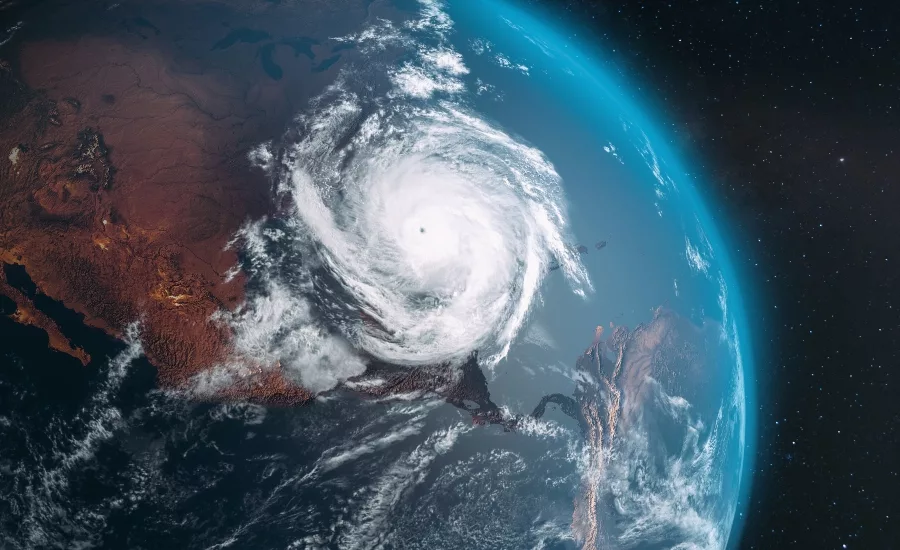Best emergency response practices ahead of severe weather season

After a historically difficult 2020 weather season, public safety officials are concerned about what the rest of 2021 has in store. Last year, wildfires burned millions of acres across the West Coast. The third-named hurricane of the 2021 season, Hurricane Claudette, killed 13 people in Alabama, and experts fear last month’s Hurricane Elsa is an ominous sign of what’s to come.
Given the potential of another severe weather season, what can local leaders do to protect their residents? For one, emergency response teams must ensure people have access to critical information before disaster strikes. Then, once severe weather arrives, residents need to know where they can turn for additional help and resources.
The best way to keep everyone informed is through technology that is designed to streamline the essential workflows and processes associated with severe weather response efforts. The right software-based solution facilitates information-sharing, early preparedness and a community’s ability to bounce back from strife.
The challenge lies in ensuring our technology platforms are easy to use, reliable and secure. Public safety leaders play a pivotal role in keeping emergency preparedness plans up to date, communicating critical information in a timely manner, providing assistance to vulnerable populations and responding to a myriad of needs for their communities.
With this context in mind, here are three best practices public safety officials should consider when evaluating their organization’s severe weather response capabilities.
Keep Communities Informed
When facing severe weather events, safety officials should send updates and alerts frequently to constituents. These notifications should contain helpful information, such as where shelter, food and other resources are available for those who leave their homes.
Safety leaders need to avoid the tendency to overload outbound communications with irrelevant context. Doing so only muddies emergency messages to residents. Leaders should encourage those in their organization to stick to only what is necessary for people to stay safe – unambiguous timelines, clear instructions and essential information about how severe weather may affect their region.
Moreover, they must be thoughtful about what types of information the organization sends across different communication channels. People assess public announcements with varying degrees of urgency, depending on how they receive those messages. For example, text messages are perceived as more urgent than email, which is why public safety officials should consider reserving the most essential information for what they know will go directly to people’s phones.
Organizations must also ensure mass notification systems are easy to use in the heat of the moment. Tabletop training exercises, pre-built scenario-based alert templates and a user-friendly notification system enable a rapid, coordinated and deliberate response.
Send Targeted Communications
On top of sharing high-quality, timely updates, safety officials should segment their target audiences to increase the relevancy of outbound communications. Doing so ensures that people get the best information possible for the circumstances they are facing.
Hurricanes, for example, are wide-reaching, so those in one location may have entirely different needs from those in another. The same hurricane could cause rip tides and flood warnings in one town, but a further town inland would not need to worry about such things. Given this reality, it wouldn’t make sense for public safety officials to send the same emergency messages across the entire county.
Response teams using emergency notification platforms must be able to assign constituents to unique groups depending on certain criteria, such as geographic proximity to a storm. They should also be able to easily upload resident contact information, schedule future messages, send out multi-lingual notifications, identify their vulnerable needs population and conduct geo-based polls as part of their emergency response protocols.
Officials should choose an emergency notification solution that makes sending targeted messages painless. By giving emergency responders the tools they need, leaders can guarantee that residents on the receiving end of mass notifications always have a reason to pay attention.
Ensure Collaboration in Emergency Response
Collaboration is paramount for coordinating emergency response across the stakeholders in the safety ecosystem. Emergency management, safety, security and first responder teams from both public agencies and private enterprises need to communicate and coordinate their activities.
For severe weather emergencies, the ability to immediately notify stakeholders, establish clear responsibilities and provide direction for tactical decisions are crucial to ensuring a safe and secure response. Responders and incident managers need a central command system integrated with critical communication technology to increase situational awareness and monitor the evolving response timeline. To coordinate incident response, stakeholders need access to response protocols, task management, two-way communications, real-time data sharing, incident logs and after-action reporting.
After a tough 2020, committing to these best practices is the way forward for strengthening trust with community members and keeping people safe, regardless of the severe weather on the horizon.
Looking for a reprint of this article?
From high-res PDFs to custom plaques, order your copy today!









